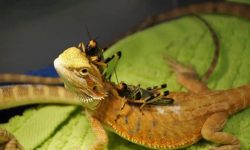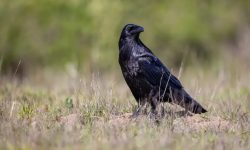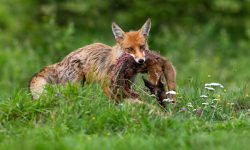Frogs are fascinating amphibians that play vital roles in ecosystems and are also popular pets around the world. One of the most common questions asked by frog enthusiasts is: What do frogs eat? Understanding their diet is essential for maintaining health, ensuring natural behavior, and keeping them strong and active.
In this comprehensive guide, we’ll explore everything about frog diets—from what they eat in the wild to the best foods for pet frogs—and list 20 specific foods that will help them thrive.
Why Diet Matters for Frogs

Healthy Growth and Activity
A frog’s diet directly affects its energy levels, growth rate, and overall vitality. Proper nutrition fuels their muscles for jumping, hunting, and escaping predators. Well-fed frogs display vibrant colors, active behavior, and stronger immune systems. On the other hand, frogs with poor diets often become weak, lethargic, or suffer from diseases such as metabolic bone disorder.
Ecosystem Role
Frogs are both predators and prey in nature. By eating insects and other small creatures, they help maintain balance in local ecosystems by controlling pest populations. Their feeding habits also influence the populations of species they prey upon, making them an important part of the food web.
Pet-Care and Captivity Considerations
For pet frogs, replicating their natural diet is key to keeping them healthy. There is no single commercial food that can meet all of a frog’s nutritional needs, so variety is essential. Pet frogs need live food to stimulate natural hunting instincts, along with supplements like calcium and vitamins. Feeding them correctly will ensure strong bones, healthy skin, and an active lifestyle.
How Frog Diets Change Over Life and Size
Tadpoles vs Adults
A frog’s diet changes dramatically as it grows. Tadpoles are mostly herbivorous or omnivorous, feeding on algae, plant matter, and detritus. Once they transform into adult frogs, their digestive systems adapt to a carnivorous diet. Adult frogs primarily eat insects, worms, and other small animals that move.
Small Frogs vs Large Frogs
The size of the frog determines what it can eat. Smaller frogs stick to insects and tiny invertebrates, while larger frogs, such as bullfrogs, can eat small fish, birds, or rodents. The size of prey must always match the frog’s mouth—known as the gape size—to prevent choking.
Wild vs Captive Diets
In the wild, frogs eat whatever live prey they can catch that fits in their mouth. This could include flying insects, worms, spiders, and even small reptiles. In captivity, it’s harder to provide such a range, so owners must mimic the natural diet with a variety of feeder insects and occasional treats.
20 Foods That Keep Frogs Strong and Active
1. Crickets
Crickets are the gold standard when it comes to feeding frogs. They’re widely available, affordable, and provide an excellent source of protein and fiber. Their constant movement naturally stimulates your frog’s hunting instincts, encouraging activity and exercise.
To boost their nutritional value, it’s best to “gut-load” crickets before feeding. This means feeding the crickets fresh fruits, vegetables, or calcium-rich diets 24 hours prior to offering them to your frog. Dusting them with calcium powder can also help prevent bone and growth issues. Crickets suit nearly all terrestrial and tree frog species, making them a universal staple.
2. Mealworms
Mealworms, the larvae of darkling beetles, are a popular protein source that helps promote growth and muscle strength. However, their tough exoskeleton made of chitin can be difficult for smaller frogs to digest. It’s recommended to feed them in moderation and ideally to larger or more robust species.
You can offer them live, which stimulates natural hunting behavior, or pre-killed for younger frogs. To enhance digestibility, crush the head or slightly cut the body. Gut-loading them beforehand ensures your frogs get maximum nutritional value without digestive stress.
3. Waxworms
Waxworms are the ultimate frog treat. Soft-bodied and highly palatable, they’re loved by even the pickiest eaters. These larvae are rich in fat, which makes them great for energy but unsuitable as a daily staple. Instead, think of them as a special snack or a way to help underweight frogs regain condition.
Their appealing movement triggers an instant feeding response, making them perfect for finicky or lethargic frogs. However, overfeeding waxworms can lead to obesity, so they should be limited to once or twice a week.
4. Earthworms / Nightcrawlers
Earthworms are among the healthiest foods you can offer any frog. They’re packed with moisture, protein, and essential amino acids while being easy to digest. Medium to large frogs, such as Pacman or bullfrogs, eagerly devour them.
Always use worms from trusted sources—preferably those raised for feeding—to avoid exposure to pesticides or heavy metals. You can rinse or cut them into smaller pieces for smaller frogs. Earthworms are an ideal daily food, especially for ground-dwelling species.
5. Dubia Roaches
Dubia roaches are highly nutritious and becoming increasingly popular among amphibian keepers. They’re loaded with protein and low in fat, providing sustained energy without the risk of weight gain. Because they contain less chitin than crickets, they’re easier to digest.
Roaches are also odorless, easy to breed, and don’t jump, making feeding stress-free. Many frog owners use them as a primary diet base, alternating with crickets and worms for variety.
6. Black Soldier Fly Larvae
Black soldier fly larvae (BSFL) are an excellent natural calcium source, which is vital for maintaining strong bones and preventing metabolic bone disease. They’re soft-bodied, easy to digest, and wriggle enough to catch your frog’s attention.
These larvae can be used regularly alongside crickets and worms. Their perfect calcium-to-phosphorus ratio means you won’t need to dust them with extra calcium powder as often. They’re a great staple for tree frogs and smaller terrestrial species.
7. Beetles and Beetle Larvae
Frogs eat beetles and their larvae in the wild, so including them in captivity helps mimic a natural diet. Beetles add texture and challenge to feeding time, while larvae provide softer, protein-rich nourishment.
Only use beetles that come from safe, pesticide-free environments. Wild-caught beetles can carry chemicals or parasites, so captive-bred options are always safer. This food type suits adventurous eaters and helps maintain dietary diversity.
8. Grasshoppers and Locusts
Grasshoppers and locusts are large, meaty insects packed with protein, fiber, and moisture. They’re an ideal choice for big frog species like tree frogs or African bullfrogs. Their lively jumping encourages physical activity and natural hunting instincts.
For safety, always source them from reputable suppliers rather than wild-catching them. You can offer them live for enrichment or gut-load them beforehand for better nutrition.
9. Moths and Butterflies
Moths and butterflies are occasional yet delightful treats that add realism to your frog’s diet. Their fluttering wings trigger quick predatory reactions, providing mental stimulation and exercise.
However, it’s critical to ensure these insects haven’t been exposed to pesticides, as even trace amounts can be harmful. Farm-raised or net-caught individuals are safest for feeding.
10. Flies and Mosquitoes
Small flying insects such as flies and mosquitoes are the primary prey for many small wild frogs. They’re lightweight, full of protein, and easy to digest, making them ideal for tiny or juvenile frogs.
Instead of wild-caught insects, use store-bred fruit flies, houseflies, or wingless Drosophila cultures. These are hygienic, parasite-free, and can easily be raised at home.
11. Snails
Snails make an excellent calcium-rich snack for frogs that enjoy harder prey. The shells strengthen bones and muscles, while the soft tissue provides valuable nutrients and moisture.
Always ensure the snails are captive-bred and chemical-free. Garden snails are risky due to possible pesticide exposure. Feed them occasionally to enhance dietary balance and variety.
12. Slugs
Slugs are a natural and moist protein source that frogs in the wild often hunt. Their slow movement makes them easy targets and a good enrichment food for captive frogs.
Though they can be nutritious, only offer slugs occasionally to avoid introducing harmful parasites. As always, avoid wild slugs unless you’re certain they come from a safe environment.
13. Small Fish or Aquatic Invertebrates
For aquatic species like African clawed frogs or dwarf frogs, small feeder fish such as guppies and minnows can be a great supplement. These foods mimic natural feeding patterns and provide essential omega-3 fatty acids and protein.
However, avoid overfeeding fish or using wild-caught specimens, as they can introduce parasites. Choose quarantined, disease-free feeders and offer them sparingly.
14. Bloodworms and Brine Shrimp
Bloodworms and brine shrimp are perfect for aquatic frogs or young froglets transitioning to larger prey. They’re soft, nutrient-dense, and can be fed live or frozen.
These foods are also convenient and clean, reducing the mess associated with live feeding. Bloodworms are especially good for growth and maintaining vibrant coloration in aquatic frogs.
15. Pinky Mice (for Large Species)
Massive frogs like horned frogs or bullfrogs can occasionally consume small pinky mice. These provide a strong protein and fat boost, helping with growth and breeding preparation.
However, they should never be a staple food. Too much mammalian fat can cause liver strain and obesity. Offer them no more than once a month as a special treat.
16. Young Lizards or Salamanders
In the wild, predatory frogs may hunt small reptiles or amphibians when the opportunity arises. This showcases their adaptability and opportunistic nature.
For captive frogs, though, this type of prey is unnecessary and can introduce diseases. It’s more of an interesting insight into natural frog behavior rather than a recommended diet option.
17. Other Frogs
Certain frog species, especially larger ones, are cannibalistic. They may eat smaller frogs when food is scarce. This is a normal survival instinct in nature but should never occur in captivity.
Owners should always separate frogs by size to prevent aggression or accidental predation.
18. Aquatic Worms and Invertebrates
Aquatic worms, mosquito larvae, and small crustaceans are ideal foods for water-dwelling frogs. They add movement and variety, helping frogs stay mentally stimulated and physically active.
They’re also nutrient-rich and mimic the natural diet of many amphibians. Frozen or live forms both work well, but ensure they come from clean, chemical-free sources.
19. Springtails and Micro-fauna
Tiny froglets and dwarf frog species thrive on microscopic prey like springtails, fruit flies, and micro-worms. These provide essential nutrition during early growth stages and help develop hunting reflexes.
They’re also easy to culture at home, ensuring a continuous food supply. Feeding micro-fauna supports healthy development and strong immune systems in young frogs.
20. Commercial Pelleted Foods
Modern frog diets now include specially formulated pellets designed for aquatic and semi-aquatic species. These are nutritionally balanced with vitamins, minerals, and proteins.
While convenient, pellets should never completely replace live food. Frogs need the movement and stimulation of live prey to stay active and mentally healthy. Use pellets as a supplement for times when live food isn’t available.
Feeding Tips and Best Practices
Offer Variety
No single food provides everything a frog needs. Rotate food types to give your frog a balanced diet rich in protein, vitamins, and minerals. Variety also keeps feeding time interesting and natural.
Watch Prey Size
The prey should be smaller than the distance between your frog’s eyes. Oversized food can cause choking or injury. Always choose appropriately sized prey for your frog’s age and species.
Gut-Loading and Supplementation
Feed insects healthy food before offering them to frogs. This process, known as gut-loading, ensures the frog absorbs those nutrients. Also, dust the prey with calcium and vitamin supplements once or twice a week to prevent deficiencies.
Feeding Frequency
The feeding schedule depends on your frog’s size and age. Young or small frogs eat daily, while adult frogs can be fed every two to three days. Overfeeding can lead to obesity and shorter lifespans, so moderation is important.
Maintain the Right Environment
A healthy diet won’t matter if the frog’s habitat is poor. Maintain proper humidity, clean water, and suitable temperature. Stress or dehydration can reduce appetite and harm digestion.
Avoid These Foods
Never feed frogs fruits, vegetables, processed meats, or wild insects that may carry pesticides. Frogs cannot digest plant matter well, and human food can cause illness.
Common Misconceptions About Frog Diets
“All Frogs Eat Only Flies”
Flies are just one part of a frog’s diet. In reality, frogs eat a huge variety of prey, from worms and beetles to fish and even rodents, depending on the species.
“All Frogs Are Carnivorous”
While most adult frogs are carnivores, some rare species also eat fruit in the wild. However, the vast majority depend entirely on animal prey for nutrition.
“One Type of Food Is Enough”
Feeding only one insect type, such as crickets or mealworms, can lead to nutrient deficiencies. Frogs thrive when offered a diverse range of foods.
How to Tell If Your Frog Is Eating Well
A healthy, well-fed frog is active, alert, and has clear eyes and smooth skin. It responds quickly to movement and eats eagerly. Frogs that refuse food, remain sluggish, or show signs of bloating may be stressed or have dietary imbalances.
Check for regular digestion and normal waste output. Frogs that are too thin or obese both indicate feeding problems. Regular observation helps detect early signs of health issues.
Summary
Frogs are opportunistic eaters with incredibly diverse diets. From tiny insects to small vertebrates, they consume almost any moving prey that fits into their mouths. Providing a balanced diet of various live foods is the key to keeping frogs strong and active.
For pet frogs, focus on a mixture of crickets, roaches, worms, and calcium-rich larvae. Offer occasional treats like waxworms or pinky mice for large species. Gut-load and supplement prey with vitamins, and always ensure proper environmental conditions.
By understanding what frogs eat and offering the right foods in the right way, you can help these amazing amphibians thrive, stay energetic, and live long, healthy lives—whether in your backyard pond or a terrarium at home.






